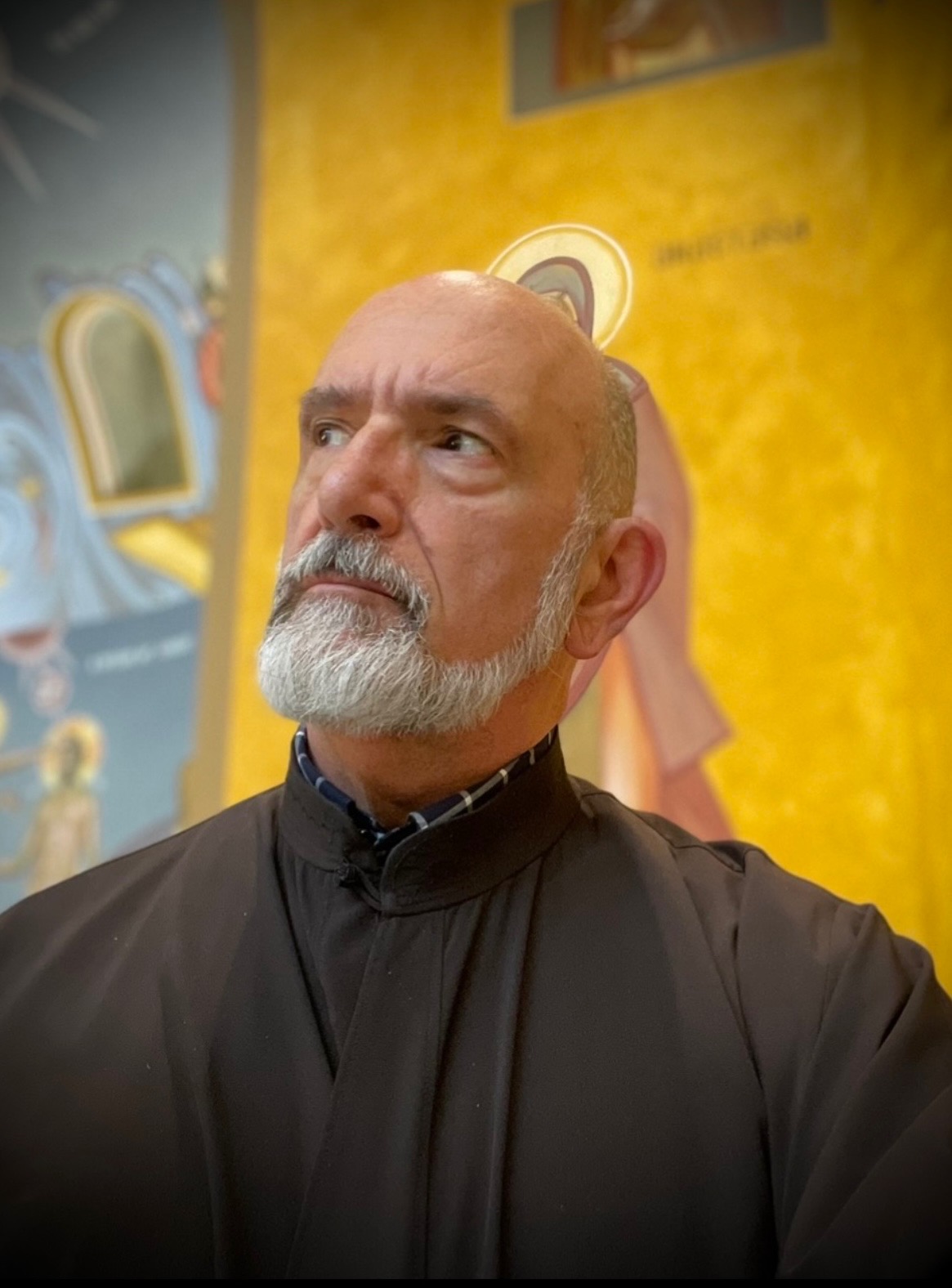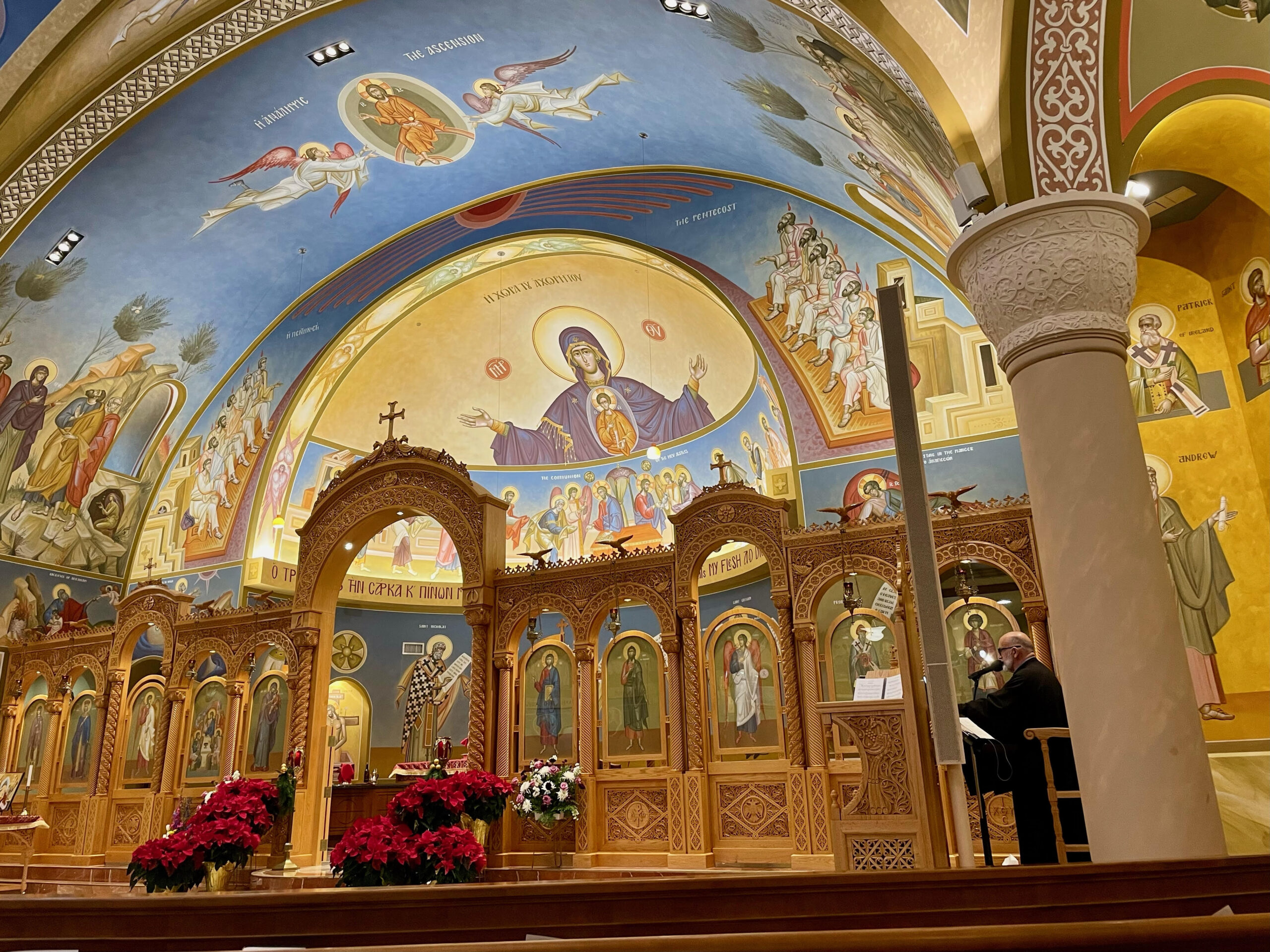Constantine Maniakas has been the main chanter (protos or πρῶτος) at Holy Trinity Greek Orthodox Cathedral in Carmel, Indiana, since just before Great Lent in 1995. The chanter (psalti or ψάλτης) role is integral in the Orthodox Divine Liturgy. It is rooted in ancient tradition and usually performed by a layperson.
Standing to the side of the altar table in the chanter stand, called a psaltirion, the chanter assists the priest during Divine Liturgy and sacraments by chanting responses and appropriate hymns. It’s a dialogue of sacred theologically based text between parishioners and clergy. The melody is sung in a range of eight Byzantine modes.
The unaccompanied vocals can create a serene environment that encourages meditation and prayer. Some chanters like Maniakas wear an exorasson, a black robe-like garment worn over everyday clothing to denote their position.

Greek language skills, music knowledge, and a good, strong voice are among the many requirements for chanters who serve at weddings, baptisms, and every service.
While learning the role, Maniakas spent countless hours transcribing, translating, and listening to recordings of Greek chanters.
During services, he chants in both English and Greek. He says he sometimes had trouble finding adequate English translations when he first started. “So, it was definitely a ‘trial by fire’ beginning for me.”
Life of Music
Maniakas moved to Indianapolis from Warren, Pennsylvania, in 1973 to attend Butler University’s Jordan College of Music. He earned bachelor’s and master’s degrees in music education with an emphasis on voice and piano.
“My background and training in music education afforded me the necessary vocal skills and basic knowledge to begin taking on the position,” he says.
Growing up in the orthodox church helped as well.
In 1974, Maniakas began playing the organ for Holy Trinity’s choir. After graduation, he became the choir director and started his 34-year-long career as an elementary music teacher in Indianapolis. He retired in 2011.
Maniakas spent time as the organist, choir director, and chanter at Holy Trinity during his career as an educator. He started focusing solely on chanting in 2009.
A big, if not lifetime, commitment, the role is nearly a full-time job and one the church community depends on.
“After 30 years, I’m still dancing on the edge of a learning curve, even though [chanting] is second nature,” he says.
“I personally feel honored to not only have the knowledge of the varying services and vocal talent needed for the position of chanter, but also the time to dedicate my latter years to the church in service.”
